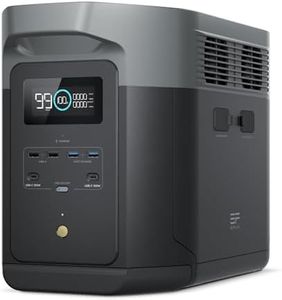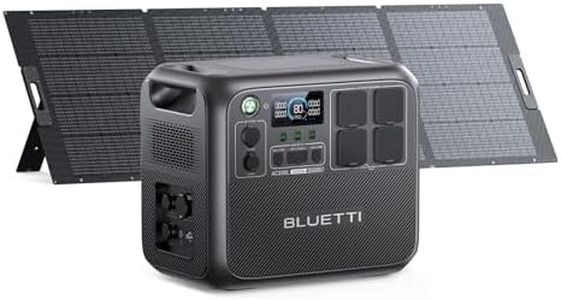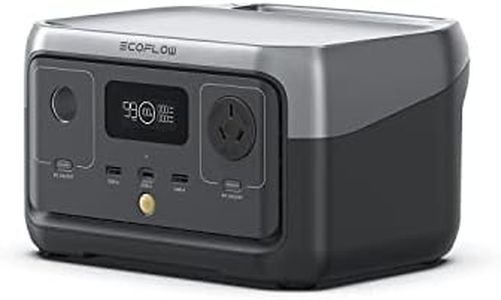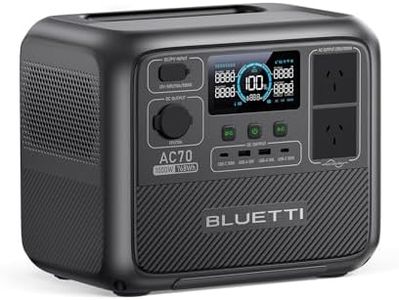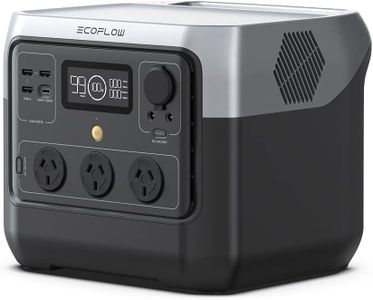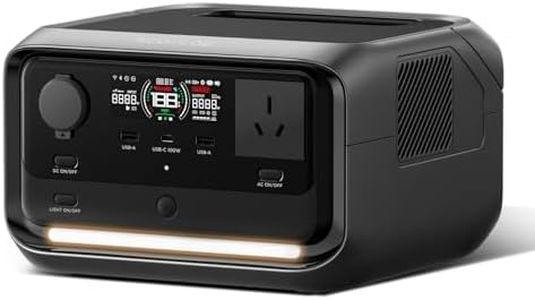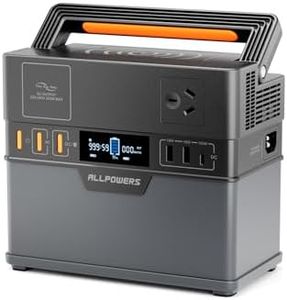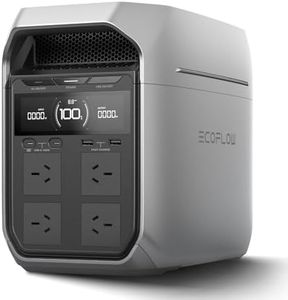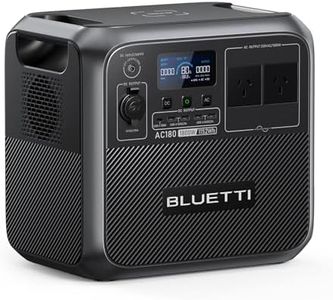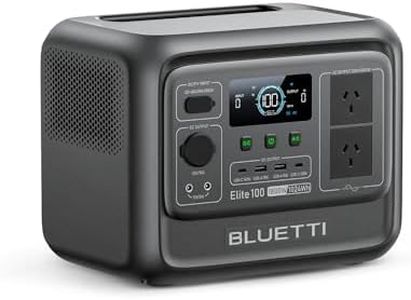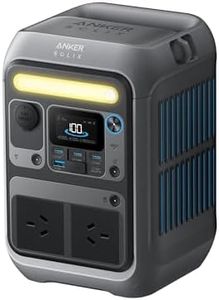We Use CookiesWe use cookies to enhance the security, performance,
functionality and for analytical and promotional activities. By continuing to browse this site you
are agreeing to our privacy policy
10 Best Portable Solar Generators
From leading brands and best sellers available on the web.Buying Guide for the Best Portable Solar Generators
Choosing a portable solar generator is a great idea if you want to have a source of clean, quiet power when you're outdoors, traveling, or during emergencies. To find the best fit for your needs, it's wise to start by thinking about what you want to power, how long you'll use it, and how much weight or size you're comfortable carrying. Each feature has its importance, and understanding the core specifications will help you make a smart choice.Battery Capacity (Watt-hours, Wh)Battery capacity tells you how much energy the generator can store and supply to your devices. Higher capacity means you can run more devices for a longer time without recharging. Portable solar generators usually have capacities ranging from about 150Wh (good for small devices like phones and lights) up to over 1,000Wh (suitable for mini-fridges or running several devices at once). To pick the right capacity, add up the energy needs of the gadgets you plan to power and estimate how long you want to use them before recharging the generator.
Solar Input (Wattage and Compatibility)Solar input refers to how much power the generator can accept from solar panels and how quickly it can recharge from sunlight. Generators with higher solar input can recharge faster, especially important if you rely on solar energy regularly. Look at the maximum wattage the input can handle and make sure it matches the solar panels you plan to use. For short weekend trips, lower inputs (50-100W) may be sufficient, but if you use the generator a lot or in emergencies, a higher input (over 150W) will help you stay powered up.
Portability (Weight and Size)Portability is all about how easy the solar generator is to carry and move around. Lighter and more compact units are easier to take on camping trips or to move around your home, but they usually have smaller batteries. Heavier models provide more power but are less convenient to move. Think about how far you need to carry the unit and whether it should fit in your car or backpack to pick the right balance for you.
Output Options (Types and Number of Ports)The output options determine what devices you can power and how many you can plug in at once. Common outputs include AC outlets (like wall plugs), USB ports, and 12V car sockets. Some generators have a mix, while others may only have one or two types. If you need to run laptops, mini-fridges, or medical devices, make sure the generator has the correct type and number of outlets for your needs.
Inverter Type (Pure Sine Wave vs Modified)The inverter in a solar generator changes the battery’s DC power to the household AC power that many devices use. Pure sine wave inverters deliver cleaner, more stable electricity, which is safer for sensitive electronics like laptops and medical devices. Modified sine wave inverters are often found on budget models and are fine for simpler devices, but can cause issues or noise with sensitive electronics. If you plan to power expensive or delicate equipment, choose a pure sine wave inverter.
Charging Options (AC, Car, and Solar)Charging options tell you how you can recharge the solar generator when there’s no sun. Most have AC adapters for wall charging and some offer car charging. This is helpful if you need quicker or more reliable ways to top up the battery, especially in bad weather. Think about your typical use: if you’ll often use it in places with no wall outlets, solar charging is most important; if you’ll have some access to a car or wall, having those as a backup is useful.

